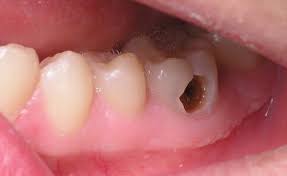Tooth extraction is a common dental procedure performed to alleviate pain, address decay or damage, or make room for orthodontic treatment. While the process itself is relatively straightforward, complications can sometimes arise during the healing phase.
One such complication is the development of white granulation tissue. In this article, we will delve into the topic of white granulation tissue after tooth extraction, exploring its causes, symptoms, and treatment options.
The Healing Process After Tooth Extraction:
Before we dive into white granulation tissue, it's essential to understand the natural healing process that follows a tooth extraction. After the extraction, a blood clot forms in the socket to protect the underlying bone and nerves.
Over time, this clot is gradually replaced by granulation tissue, which aids in the formation of new blood vessels and promotes tissue regeneration.
What is White Granulation Tissue?
Granulation tissue refers to the new tissue that develops during the healing process. It is typically pink or reddish in colour. However, in some cases, the tissue may appear white. White granulation tissue is a variation that occurs due to specific factors and can indicate an altered healing response.
Causes and Factors Contributing to White Granulation Tissue Formation:
Several factors can contribute to the formation of white granulation tissue after tooth extraction. These include:
- Infection: Bacterial or fungal infections in the extraction site can impede normal healing and lead to the development of white granulation tissue.
- Prolonged inflammation: Excessive inflammation or delayed immune response can disrupt the healing process and result in the formation of white granulation tissue.
- Poor oral hygiene: Inadequate oral hygiene practices post-extraction can increase the risk of infection and subsequent white granulation tissue formation.
- Foreign body reaction: Sometimes, the presence of foreign material, such as a bone fragment or suture, can trigger an inflammatory response and the development of white granulation tissue.
Symptoms and Diagnosis of White Granulation Tissue
The presence of white granulation tissue can be identified through various symptoms, including:
- Whitish appearance in the extraction site: One of the primary visual indicators of white granulation tissue is the presence of a whitish or pale colouration in the area where the tooth was extracted. This distinguishes it from the typical pink or reddish colour of healthy granulation tissue.
- Delayed or impaired wound healing: White granulation tissue may be associated with a slower healing process or a lack of progress in wound closure. If the extraction site shows signs of persistent or delayed healing, it could indicate the presence of white granulation tissue.
- Persistent pain or discomfort: Patients experiencing ongoing pain or discomfort beyond the expected period of normal healing should consider the possibility of white granulation tissue. Discomfort may range from mild tenderness to more intense pain in the affected area.
- Foul odour or taste in the mouth: In some cases, white granulation tissue can be accompanied by a foul odour or unpleasant taste in the mouth. This may be an indication of infection or other complications that require attention.
- Swelling or redness around the extraction site: Inflammation, swelling, or redness in the area of the extraction site can be signs of white granulation tissue. These symptoms may be accompanied by increased sensitivity or warmth in the affected area.
Diagnosis of white granulation tissue typically involves a dental professional or oral surgeon evaluating the extraction site. The diagnosis may include:
- Visual examination: The dentist will visually assess the extraction site, noting any white or pale tissue present.
- Medical history: The dentist will inquire about the patient's symptoms, medical history, and any factors that may contribute to delayed healing or complications.
- Imaging tests: In some cases, X-rays or other imaging tests may be performed to evaluate the underlying bone and rule out other potential issues, such as retained roots or infections.
A dental professional will evaluate the extraction site to diagnose white granulation tissue accurately. This may involve a visual examination, taking a medical history, and potentially conducting imaging tests if necessary.
Read Also: Single Tooth Chrome Denture: A Comprehensive Guide
Treatment Options for White Granulation Tissue:
The treatment approach for white granulation tissue aims to address the underlying cause and promote proper healing. Common treatment options include:
- Antibiotics: If an infection is present, antibiotics may be prescribed to eliminate the infectious agents and reduce inflammation.
- Debridement: Gentle cleaning of the extraction site to remove any foreign bodies or debris that may be impeding healing.
- Saltwater rinses: Regular rinsing with warm salt water can help cleanse the area, reduce inflammation, and promote healing.
- Topical medications: Dentists may recommend the application of medicated gels or ointments to the extraction site to aid in healing.
- Follow-up appointments: Regular visits to the dentist allow for monitoring of the healing process and adjustments to the treatment plan, if necessary.
Preventive Measures and Tips for Healing:
To minimize the risk of developing white granulation tissue after tooth extraction, it is crucial to follow proper post-operative care instructions, including:
- Maintaining good oral hygiene: Gentle brushing and rinsing with a mild mouthwash can help keep the extraction site clean and reduce the likelihood of infection.
- Avoiding strenuous activities: Physical exertion can disrupt the blood clot and hinder the healing process, so it's advisable to refrain from intense exercise for a few days.
- Following a soft food diet: Opt for soft, easy-to-chew foods to prevent irritation or trauma to the extraction site.
- Avoiding smoking or using tobacco products: Smoking delays healing and increases the risk of complications. It's best to abstain during the recovery period.
Recovery Timeline and When to Seek Medical Attention:
The recovery timeline for white granulation tissue can vary depending on the individual and the severity of the condition.
Generally, the tissue should resolve within a few weeks. However, if symptoms worsen, or persist, or if there is excessive bleeding, severe pain, or signs of spreading infection, it's crucial to seek immediate dental care.
Conclusion
White granulation tissue after tooth extraction can be a cause for concern, but with proper understanding and timely treatment, complications can be effectively managed.
By following post-operative care instructions, maintaining good oral hygiene, and seeking prompt dental attention when needed, patients can ensure a smoother healing process and reduce the risk of complications associated with white granulation tissue. Remember, a healthy recovery leads to a healthy smile.
FAQ 1: Q: What is white granulation tissue after a tooth extraction?
A: White granulation tissue is a normal part of the healing process after a tooth extraction. It appears as a white, fibrous tissue that forms over the extraction site. It is made up of blood vessels and connective tissue and helps to protect and heal the area.
FAQ 2: Q: How long does white granulation tissue last after a tooth extraction?
A: White granulation tissue typically forms in the first few days after a tooth extraction and gradually decreases over time as the site heals. The duration of its presence can vary depending on the individual's healing process, but it usually resolves within a couple of weeks.
FAQ 3: Q: Is white granulation tissue a cause for concern after a tooth extraction?
A: In most cases, white granulation tissue is a normal part of the healing process and does not indicate any problems. However, if the tissue becomes excessively swollen, painful, or develops a foul odor, it could be a sign of infection or other complications. In such cases, it is important to contact your dentist for an evaluation.
FAQ 4: Q: How can I care for white granulation tissue after a tooth extraction?
A: To care for white granulation tissue, it is important to follow your dentist's post-extraction instructions. This usually includes maintaining good oral hygiene by gently rinsing with saltwater or prescribed mouthwash, avoiding strenuous activities that could disrupt the healing site, and taking any prescribed medications as directed.
FAQ 5: Q: When should I contact my dentist about white granulation tissue after a tooth extraction?
A: While white granulation tissue is generally a normal part of healing, it's always best to consult your dentist if you have any concerns or if the tissue exhibits unusual symptoms such as excessive swelling, severe pain, or signs of infection. Your dentist will be able to evaluate the situation and provide appropriate guidance or treatment if needed.


